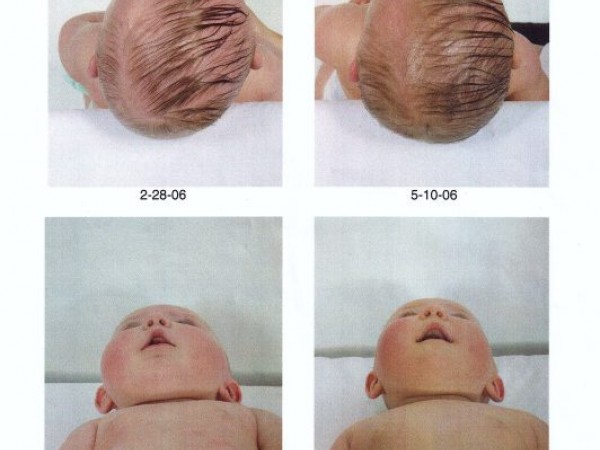

Dolichocephaly is not always serious, since the condition ranges from mild to severe. This change in shape is more commonly associated with primiparity (first babies), larger babies, oligohydramnios, and posterior placentas, all of which result in greater forces applied to the fetal head. Technically, dolichocephaly is a mild cranial deformity in which the head has become disproportionately long and narrow, due to mechanical forces associated with breech positioning in utero. Since the American Academy of Pediatrics’ Back to Sleep Campaign, the incidence of positional plagiocephaly has increased dramatically with a concurrent rise in the incidence of torticollis. Currently the norm has changed to a more brachycephalic (shorter and broader) shape.

Historically, a dolichocephalic (elongated) head shape was the norm.

About 1 out of 4200 babies is born with dolichocephaly. Dolichocephaly is also known as dolichocephalism, cymbocephaly, tectocephaly, sagittal synostosis, scaphocephalis, scaphocephalism, mecocephaly, and scaphocephaly. Dent in the forehead: A rare manifestation of metastaticcancer.Learn all about dolichocephaly definition, pictures, symptoms, causes and treatment. Congenital skull indentation: A case report and review of theliterature. A case of multiple myeloma presenting as scalp swelling withintracranial extension. You can learn more about how we ensure our content is accurate and current by reading our editorial policy. Healthline has strict sourcing guidelines and relies on peer-reviewed studies, academic research institutions, and medical associations. There are also cases when surgery is required to correct the skull shape and make sure that the baby’s brain has enough room to develop as it grows. In some cases, helmet therapy may be recommended. When a baby is born with a head dent or skull abnormality, the symptoms will usually resolve on their own within 6 months. Some people may need bone grafts to surgically correct the loss of bone mass in their skull. Alendronate (Fosamax) and ibandronate (Boniva) are examples of these drugs. If you have Paget’s disease of bone, Gorham’s disease, or another rare bone disease that’s causing your skull dent, your doctor may prescribe bisphosphonates - drugs that keep your body from absorbing your bone tissue. The treatment you need after surgery will depend on what kind of cancer you have and how aggressive the treatment needs to be. Surgery will likely be required to get rid of the cancerous tumor. In the rare case that the irregular shape of your skull reveals a malignant tumor, you will need cancer treatment. These types of fractures are also treated with medication for pain relief and antibiotics to prevent infection. Bone fragments will need to be removed from the area around your brain to prevent brain damage. Treatment for depressed skull fracturesĭepressed skull fractures often require surgery. The treatments for a dent in your skull vary widely, depending on the underlying cause. If the bones in a baby’s skull fuse prematurely, the baby’s head may appear dented or misshapen - a condition called craniosynostosis.Ĭraniosynostosis can happen by itself, or it can be caused by genetic syndromes, including Apert syndrome and Pfeiffer syndrome. These indentations can be caused by the birth process or by the way the baby was positioned in their mother’s womb. Sometimes babies are born with an indentation in their skull. These cases are rare, but “bone-destructive” cancers (such as multiple myeloma) can cause skull depressions and skull irregularities. There are case reports of skull depressions that have led doctors to discover cancer in a person. Sometimes the overgrowth can make your skull appear irregular or dented. This can lead to an overgrowth of bone in your skull, leading to headaches and other symptoms. Paget’s disease interferes with your body’s ability to replace old bone tissue with healthy new bone tissue. Gorham’s disease can cause bone loss in your skull, leading to a visible dent in some cases. Gorham’s disease is a rare condition that leads your bone mass to be replaced by other kinds of tissue.

This kind of injury requires emergency medical treatment.Īny significant head injury should be immediately evaluated by a doctor. A depressed fracture means that a part of your skull has been crushed in toward your brain. TraumaĬar accidents, falls, or severe blows to the head can cause what’s called a depressed fracture in your skull. It can also be genetic or happen because of an injury. A dent in your head (also known as a skull depression) can indicate several medical conditions.


 0 kommentar(er)
0 kommentar(er)
